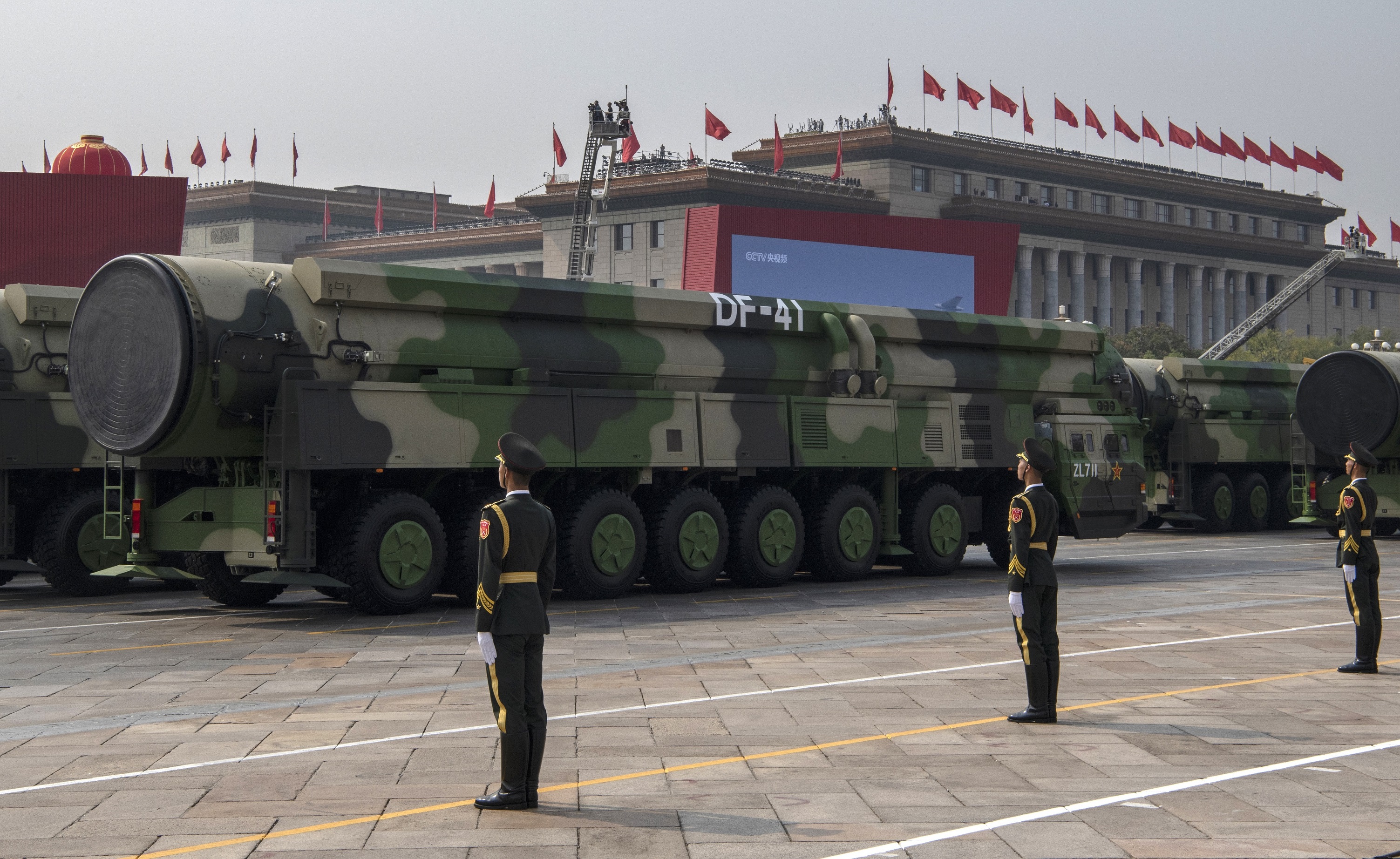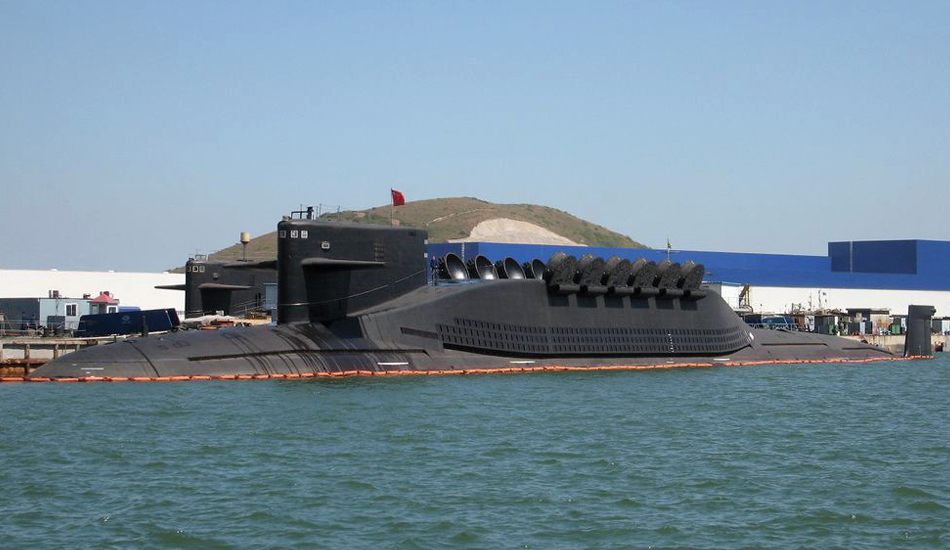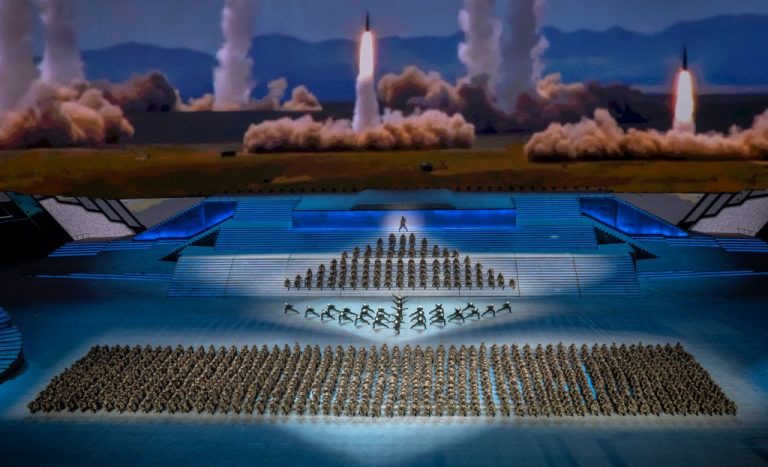Construction of a third nuclear missile silo array — purportedly being built to house more than 100 intercontinental ballistic missiles — has been identified in China by Pentagon officials using satellite imagery, the Washington Times has learned.
This most recently discovered field is the third field of its size identified this year by U.S. intelligence agencies and appears to be equal in size to the two other fields.
“Adm. Charles Richard, commander of the U.S. Strategic Command, said Thursday, Aug. 12, that the first two missile fields being built are part of China‘s “explosive” expansion of nuclear forces,” as reported by the Washington Times.
Admiral Richards told an audience at a missile defence conference that “we are witnessing a strategic breakout by China. The explosive growth in their nuclear and conventional forces can only be what I described as breathtaking.”He added that “frankly, that word ‘breathtaking’ may not be enough.”
The missile silos are in addition to existing ICBMs that the Chinese People’s Liberation Army (PLA) has deployed in silos as well as scores of road-mobile, submarine launched and long-range missiles.

Success
You are now signed up for our newsletter
Success
Check your email to complete sign up
Pentagon officials are speculating that China will use the missile field to house the newest addition to their arsenal, the DF-41 missile, which is believed to be able to accommodate upwards of 10 warheads carried on multiple independently targetable reentry vehicles or MIRVs.
MIRVs are an exoatmospheric ballistic missile that can contain several warheads, each capable of being aimed to hit different targets.
Satellite imagery indicates that this third site is located near Hanggin Banner, Ordos city, in the Inner Mongolia region. Two additional sites consisting of more than 100 silos each were discovered this June and July in the desert outside the northwestern city of Yumen.
The sites are all situated in the Chinese interior, far from the eastern coast.
A growing arsenal
The three new missile bases have the potential to house between 350 and 400 long-range missiles, U.S. officials said. This would indicate that China’s arsenal could increase to more than 4,000 warheads when accounting for their DF-41 inventory alone.
The United States currently has an estimated inventory of 3,800 warheads with 1,357 deployed for use and the others in storage.
Adm. Richard said that while the United States has a larger warhead stockpile than China, two-thirds of them are “operationally unavailable” due to treaty constraints, such as provisions under the New Start treaty with Russia. China does not have to contend with such constraints.
Last year, the Pentagon estimated that the Chinese military had a number of nuclear warheads numbered in the “low 200s” and are expected to increase their stockpile by an additional 200 in the coming years. Adm. Richard believes that intelligence estimates of China’s nuclear buildup needs to be updated weekly due to the pace of Beijing’s arms development.

The actual number of new missiles intended for these silos is unknown but could be much smaller. China has been known to deploy decoy silos in the past.
It’s a tactic used by the U.S. and presumably other nuclear powers. During the Cold War American strategic forces would move missiles from silo to silo in a sort of “shell game” with the hopes of confusing their Soviet rivals.
Questions still remain whether or not China has the ability to produce adequate quantities of fissile material to fully arm their arsenal.
Rapid nuclear development
U.S. Secretary of State Antony Blinken stated last week that the United States is watching China’s rapid nuclear development with alarm.
Blinken stated in a virtual meeting of the ASEAN Regional Forum that there was “deep concern with the rapid growth of the PRC’s nuclear arsenal, which highlights how Beijing has sharply deviated from its decades-old nuclear strategy based on minimum deterrence.”
Adm. Richard believes that China’s rapid expansion of their nuclear arsenal will be used to coerce the United States.
“It really doesn’t matter why China continues to modernize. What matters is they are building the capability to execute any plausible nuclear employment strategy — the last brick in the wall of a military capable of coercion,” he said.
While the Chinese have denied that they are shifting their strategic forces, Adm. Richard said, “you have to look at what they do, not what they say.”














